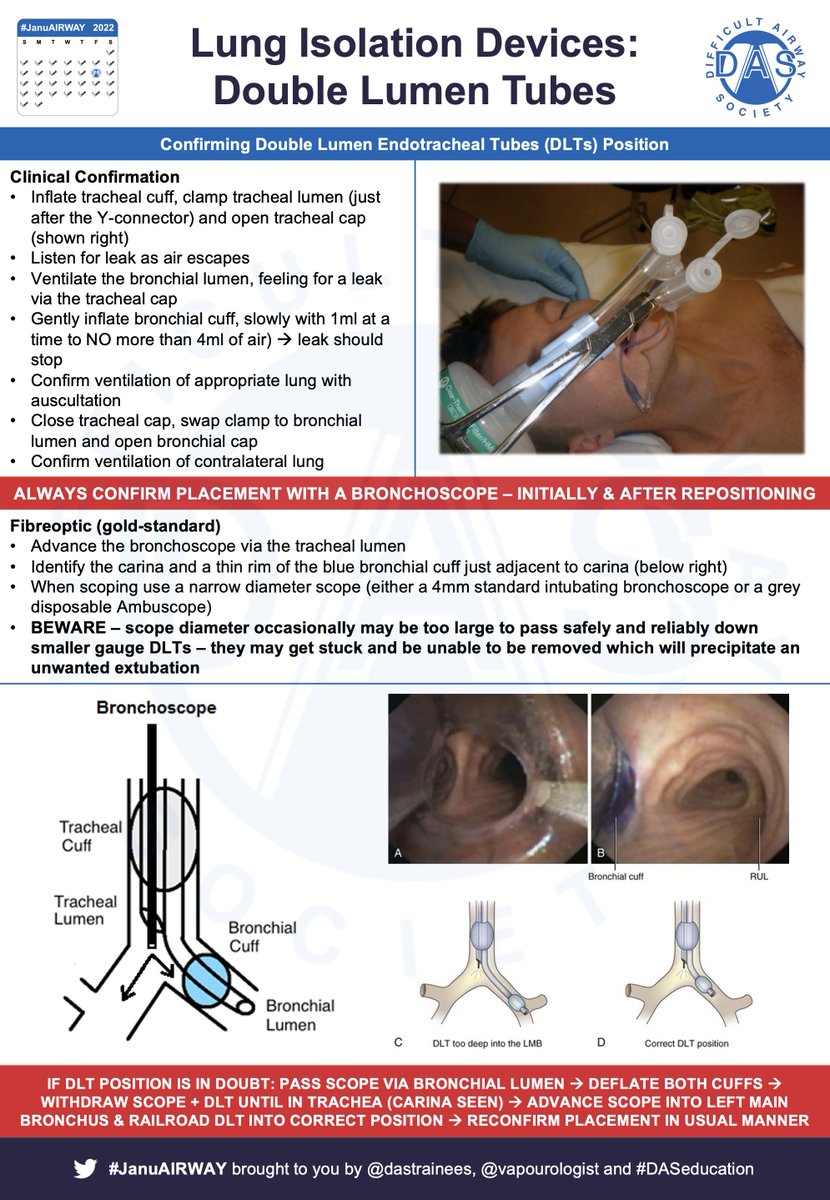
#JanuAIRWAY Day 15. Tracheostomies – more than just an ETT through the neck. Here’s a #OnePager covering some of the different tube types. Let’s dive in…
#JanuAIRWAY 1/9
#JanuAIRWAY 1/9

Tracheostomies have potentially been performed since ancient Egypt. The first non-emergency trache was thought to be performed by Asclepiades. He was also a proponent of music therapy (might be of interest to Veena).
#JanuAIRWAY 2/9
#JanuAIRWAY 2/9

There are 4 basic indications for tracheostomy:
1. Provide patent airway
2. Protect the airway
3. Clear secretions
4. Aid weaning from ventilator – the timing of which was investigated in the Tracman study in 2013 (jama.jamanetwork.com/article.aspx?a…)
#JanuAIRWAY 3/9
1. Provide patent airway
2. Protect the airway
3. Clear secretions
4. Aid weaning from ventilator – the timing of which was investigated in the Tracman study in 2013 (jama.jamanetwork.com/article.aspx?a…)
#JanuAIRWAY 3/9
What physiological changes are associated with tracheostomies?
1. Loss of humidification from upper airway
2. Reduced airway resistance & dead space
3. Inability to speak – unless able to use a speaking valve
4. Difficulty swallowing from inflated trache cuff
#JanuAIRWAY 4/9
1. Loss of humidification from upper airway
2. Reduced airway resistance & dead space
3. Inability to speak – unless able to use a speaking valve
4. Difficulty swallowing from inflated trache cuff
#JanuAIRWAY 4/9
Traches = surgical / percutaneous. 3 main surgical techniques – window, slit & Bjork flap. Important difference = time for tract maturity:
Perc = 7-10days
Surgical = 2-4days
Important in decannulation, a false tract can occur if trach re-inserted before maturity!
#JanuAIRWAY 5/9
Perc = 7-10days
Surgical = 2-4days
Important in decannulation, a false tract can occur if trach re-inserted before maturity!
#JanuAIRWAY 5/9

MUST establish whether upper airway is present – i.e. tracheostomy or laryngectomy (neck-breather). NAP4 & NCEPOD show poor outcomes still occur. @NTSP_UK has fantastic algorithms for both emergency scenarios.
ncepod.org.uk/2014tc.html
niaa.org.uk/NAP4-Report?ne…
#JanuAIRWAY 6/9



ncepod.org.uk/2014tc.html
niaa.org.uk/NAP4-Report?ne…
#JanuAIRWAY 6/9




Here are some papers / links that you might find interesting:
🔗tracheostomy.org.uk
🔗…-publications.onlinelibrary.wiley.com/doi/epdf/10.11…
🔗bjaed.org/article/S2058-…
🔗bjanaesthesia.org.uk/article/S0007-…
If you have any others of interest, tweet them to us for inclusion next time!
#JanuAIRWAY 7/9
🔗tracheostomy.org.uk
🔗…-publications.onlinelibrary.wiley.com/doi/epdf/10.11…
🔗bjaed.org/article/S2058-…
🔗bjanaesthesia.org.uk/article/S0007-…
If you have any others of interest, tweet them to us for inclusion next time!
#JanuAIRWAY 7/9
Remember USS can aid with insertion – identifying tracheal level / other structure – here’s the #OnePager from Day 5! But there’s a lot more to tracheostomy care – check out this amazing resource from Portsmouth Intensive Care Unit 🔗portsmouthicu.com/resources/2017…
#JanuAIRWAY 8/9
#JanuAIRWAY 8/9

Hope that helps. Tomorrow we'll start to look at management of Cannot Intubate Cannot Oxygenate (CICO) scenario. See you then! #JanuAIRWAY 9/9
*Disclaimer: Inclusion of content (equipment, techniques and scoring systems etc.) in #JanuAIRWAY does not constitute DAS endorsement
*Disclaimer: Inclusion of content (equipment, techniques and scoring systems etc.) in #JanuAIRWAY does not constitute DAS endorsement
• • •
Missing some Tweet in this thread? You can try to
force a refresh


























